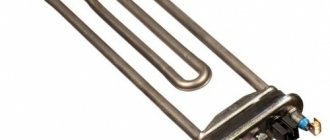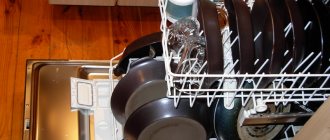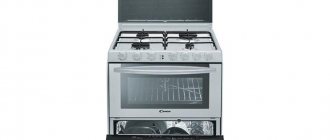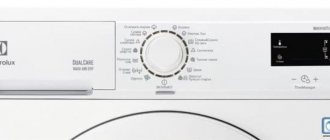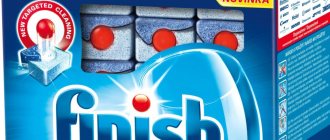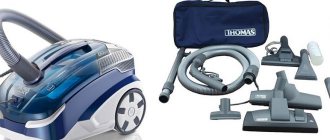In every family, purchasing new household appliances, such as a dishwasher, is an exciting event. The first start of the dishwasher (hereinafter also referred to as PMM), which was recently purchased in a store and managed to be connected to the electrical network, water supply and sewerage, is also important.
The first launch of new technology always causes excitement
How to use?
All Beko PMMs have simple controls. Users are rarely puzzled by the question of how to enable the desired function - everything is clear intuitively. Operating procedure:
- loading dishes into baskets;
- adding detergent;
- selection of washing mode;
- pressing the "Start" button.
Process steps:
- preparatory - loading, etc.;
- soaking - sprinkling water with a small amount of powder to soften food residues;
- washing - water heated by heating elements shoots out from the sprinklers in two directions, from above and below;
- rinsing - preventing the appearance of stains and stains;
- drying - with hot air (turbo) or by natural condensation.
Starting the dishwasher for the first time
Starting the dishwasher for the first time
When you use the dishwasher for the first time, you need to have a good understanding of its structure:
- The chamber door can stand in the block while the machine is operating so that it does not accidentally open.
- Baskets, holders, shelves are needed for dishes.
- Sprayers can be either at the bottom or at the top of the machine. They spray water, washing away dirt from objects.
- The control panel can be mechanical or electronic (touch). If you use a built-in dishwasher, you will see the panel on the outside of the door.
- The salt compartment is located next to the drain - at the bottom of the pan. Reservoirs for detergents are on the door.
What are the functions?
Beko machines have enough functions to make them convenient to use and ensure high-quality washing. The following options and technologies can be used in Turkish dishwashers:
- EverClean. The frequency of manual filter cleaning is reduced by four times, since the device has a special pump for self-cleaning the filter.
- GlassShield. Automatic determination of water hardness. The manufacturer claims that this option extends the life of glass products tens of times.
- AquaFlex. Control of spray water pressure. It is different in different parts of the bunker. Below, where pots and pans are placed, it is higher. At the top, where fragile and lightly soiled dishes are placed, it is lower.
- Watersafe+. Double protection against leaks. When they appear, the system blocks the water supply. There is also an additional protection that turns off the water intake if the hose leaks.
- Silent-Tech. Reduced noise - up to 49 dB. With such indicators, the equipment can work in night mode - the roar of the device will not disturb anyone.
- The smooth movement of the baskets is ensured by guides with bearings - this allows you to avoid collisions of the plates with their “neighbors”.
- Camera lighting. You can load dishes comfortably.
- BabyProtect. Intensive mode, which is recommended for washing children's dishes. Hot rinse is provided.
- Acrobat. Thanks to this technology, baskets can be placed on different levels.
- The baskets are equipped with holders that allow you to place large utensils in them.
Advantages
- Fingerprints do not remain on stainless steel - this feature is rarely seen in mid-price PMMs, especially in economy class ones.
- Camera ergonomics. The hopper is spacious - you can put long utensils, bulky pots, even a pizza plate will fit. Convenient adjustment of the upper basket.
- Economical in terms of energy consumption. Considering how long wash cycles take, this is an extremely important indicator for consumers.
- Flexibility of the half load system. While many competitors in this mode provide for loading only the lower basket, Veko allows you to use any basket.
- Sensitive electronics instantly react to the slightest leaks.
Malfunctions
Turkish dishwashers last about 10-15 years. Their owners are quite frequent guests of service centers. The problems are mostly minor. In most cases, there is no need to even call a technician - problems can be easily fixed on your own. Why does it happen that the device does not work:
- Wear of parts. If your dishwasher won't turn on or won't drain, it might be time to buy some replacement parts.
- Violation of operating rules. Read the instructions for use before using the equipment. You may be loading dishes incorrectly or not clearing leftover food from your plates.
- Filters are clogged due to untimely cleaning.
- Manufacturing defects. It is advisable to replace faulty components. To do this, you will have to disassemble the device, so you will have to read the instructions again and watch a useful video.
- Third-party causes - incorrect power supply, damage to hoses.
How to dismantle and disassemble a dishwasher?
Removal and disassembly of the dishwasher must be carried out in accordance with the manufacturer's instructions.
Removing the front panel of a built-in dishwasher
Well-known brands provide more detailed information about the equipment they produce, incl. in Russian. In other cases, you will have to look for a sensible algorithm of actions on the Internet, or trust your technical instinct - after all, the dishwasher device is not super-complicated and anyone can figure it out using their ingenuity and the tools necessary for the job.
Strict adherence to operating conditions reduces the likelihood of a dishwasher breaking down by at least four times. Therefore, immediately after installation, thoroughly study the operating programs of the unit and clearly explain to your household how to use it correctly.
Repair of common faults
- Programs do not start. A possible solution is to clean the filters and injectors. Replacing the pump or electric motor.
- Overflow of water with leakage into the bottom of the housing. The solution is to repair and replace the water level sensor.
- The water is not heating up. The solution is to replace/repair the heating element and temperature sensor.
- The pump does not pump out or draw in water. What to do - clean the filters and pump. Inspect the hoses - they may be kinked. If the pump is faulty, repair or replace.
- Washing is carried out without detergents. The injectors need to be cleaned or the valve repaired.
- Loud noise. It may be time to replace the seals or bearings, or clean the pump.
- The plates are damp after drying. The fan is broken and needs repair or replacement.
What tools can be used
The purpose of the detergent should be for use in dishwashers. Open packages of products should be kept in a dry place, out of the reach of children. Manufacturers recommend using products that do not contain chlorine and phosphate.
Short programs involve the use of powder detergents. They are tucked into compartment No. 2 with a lattice lid.
The tablets are used in programs with pre-wash and high temperatures. Such products are refilled into the car according to the instructions.
When you use water softener salt, detergent and rinse aid separately, cleaning results better. Recently, a product has appeared on the household chemicals market that acts as all these 3 elements at the same time (a universal remedy). When using these products, you should strictly follow the instructions for their use to achieve the desired result.
Reboot
The instructions for the PMM always contain a table with a breakdown of fault codes. Before you begin to identify and fix the problem, it is recommended to reset the errors in case there was a system failure. Reboot:
- Turn off the PMM for 15-20 minutes - be sure to remove the plug from the outlet.
- Turn it on. If the code disappears from the display, everything is fine - no need to worry.
- If the code appears again, it’s time to decipher it and begin troubleshooting.
Troubleshooting
The main problems with dishwashers include:
- Unsatisfactory cleaning results.
- Poor drying.
- Metallic appearance with a bluish iridescent hue.
- Smell.
Preventing these problems is to do the following:
- Load dishes according to the instructions.
- Timely cleaning of filters.
- Use appropriate detergent.
- After rinsing, the dishes should stand for better drainage.
- Correct setting of rinse aid, detergent, salt.
Compliance with these and some other points specified in the instructions will ensure long life and reliable operation of the dishwasher.
How to choose?
Criteria for choosing PMM "Beko":
- Water flow level. Energy class. The higher the energy efficiency class and the lower the water consumption, the more economical the equipment. The lower your electricity and water bills will be. The highest energy efficiency class is the best choice. If the modification provides fast and economical programs, ECO modes, then you can quickly wash the dishes with the least amount of resources. It is advisable to have a 50% load - this will also help save money.
- Ease of Management. All versions of Beko have an electronic control type. Even children can master it. It is advisable to take PMMs with automatic programs - they will save you from choosing modes. Just load the dishes and press a button, the machine itself will find the optimal washing conditions, assessing the soiling and the amount of work.
- Indication. Thanks to the salt and rinse aid indicators, it is possible to ensure ideal washing conditions. A sound signal would also be useful.
- Display. This is convenient, but not necessary.
- Protection from leaks. Better - full. Partial will not protect you from flooding.
- Software. There is no normal mode. You have to either select or turn on the automatic program, if there is one. Instead of the usual program, the manufacturer offers a choice of the following: intensive, express, economy and delicate mode, as well as soaking.
Dear buyer...
Page 2
- Image
- Text
Dear buyer!
Please read these instructions carefully before installation and
operation of your dishwasher. Carrying out further
instructions prevents the risk of injury and/or damage
cars.
Keep these documents in a safe place for later
use.
The instruction manual has been compiled for different machines, therefore
Some features mentioned here may not apply specifically to you.
car.
Symbols and explanations
This user manual contains the following symbols:
Important information and useful operating tips.
Warning of dangerous situations for life and property.
Electrical Voltage and Shock Hazard Warning
electric shock.

